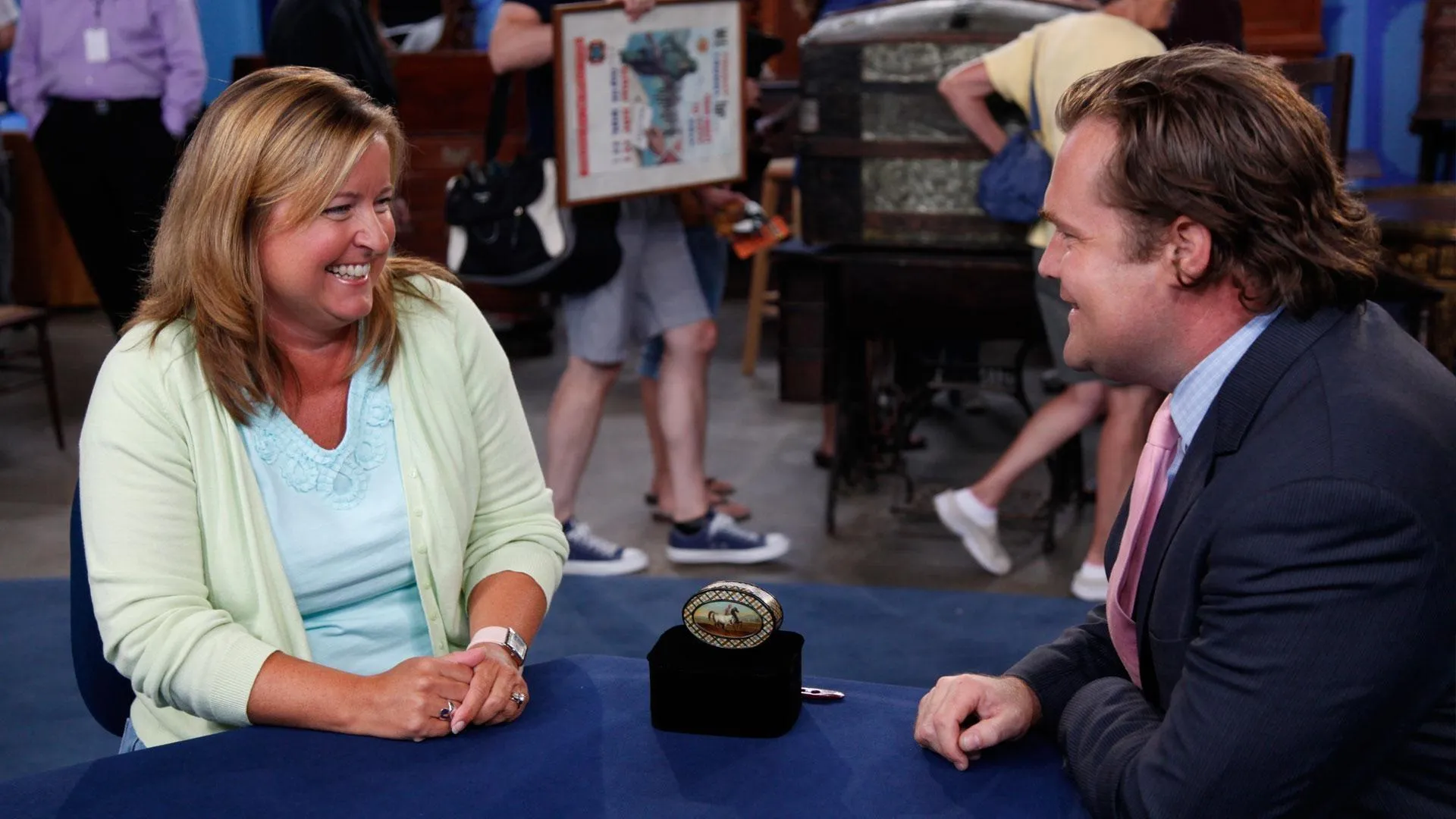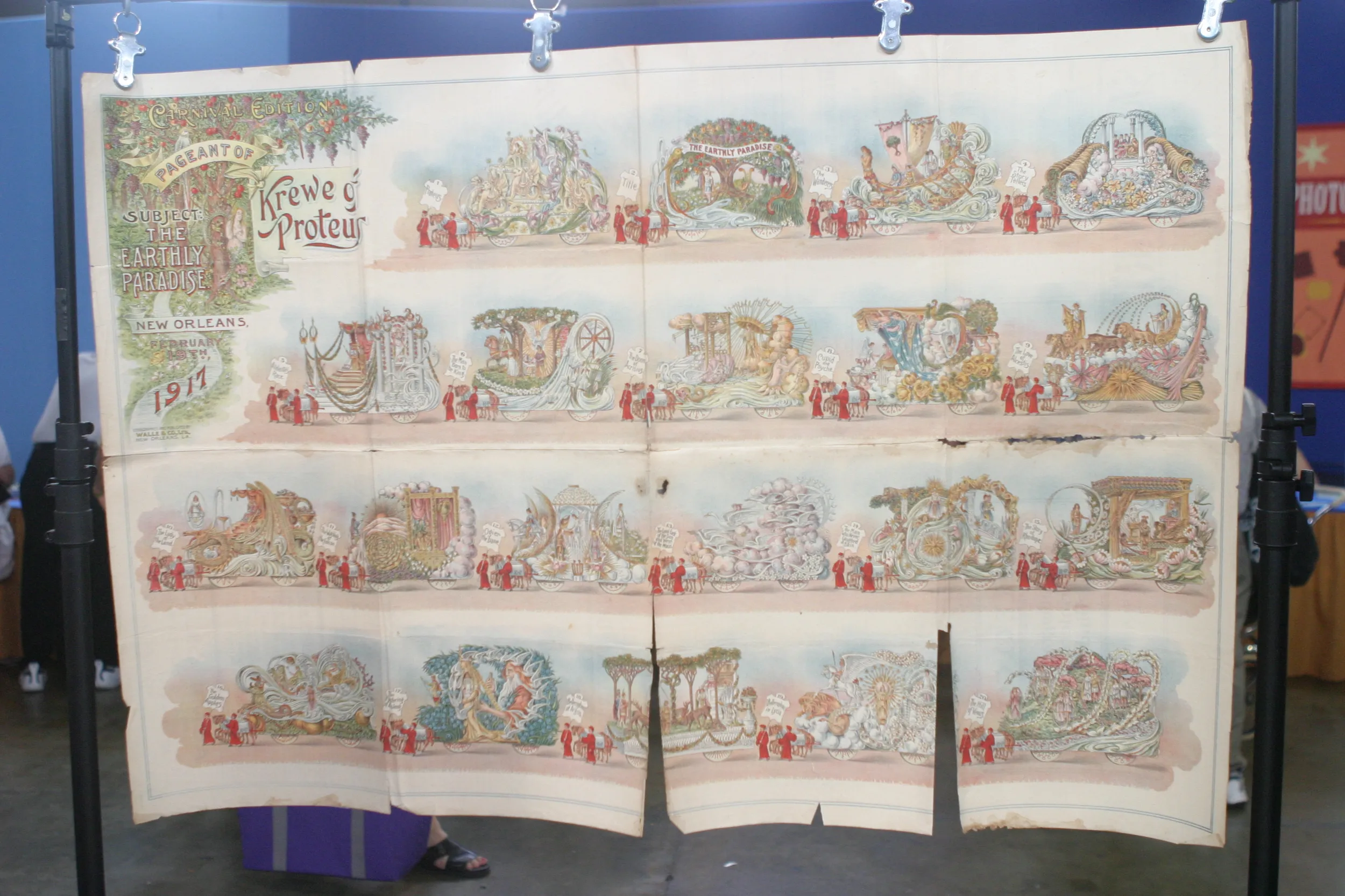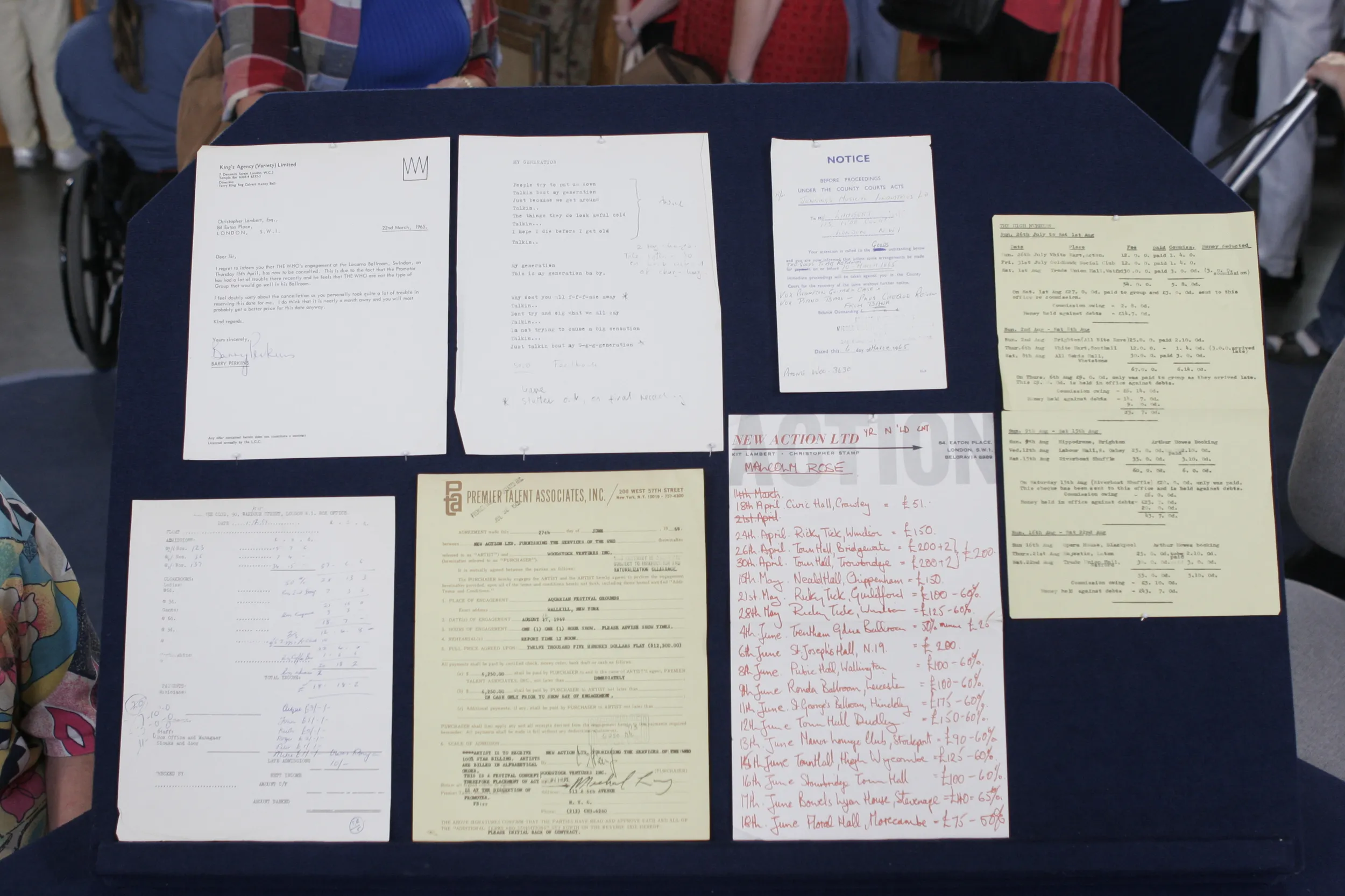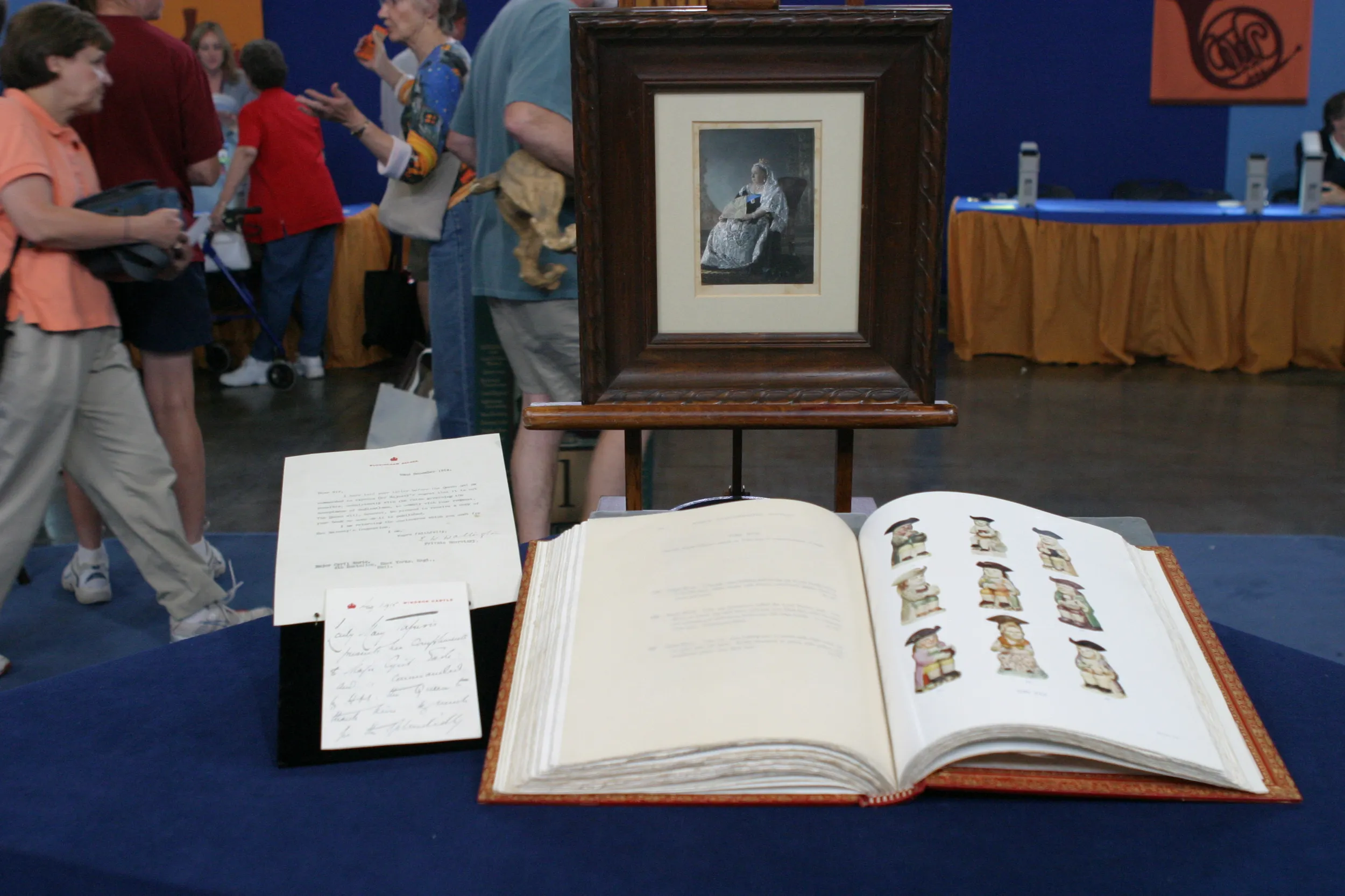GUEST: I got it from my uncle, who came over in 1909 on the Lusitania. Grandma had it on the wall before my time. And then in the late '50s, early '60s, I can remember going into a brooder house and there this picture was. And so, I'm really amazed it's still around. When Grandma passed away, it was going to go in the garbage, and I snagged on to it and said, "I'll just hang it on for a little bit."
APPRAISER: Do me a favor; I'm a city boy. When you say "brooder house," what do you mean?
GUEST: It's a chicken house, raise chickens.
APPRAISER: But to have something like this come out of a chicken house is pretty impressive. Do you know what the most famous ocean liner is?
GUEST: No.
APPRAISER: I would say it's probably the Titanic. Okay. And the Titanic is so famous that it's memorabilia is really valuable and sought after. Do you know what the second most famous ocean liner is as far as memorabilia goes?
GUEST: I hope Lusitania.
APPRAISER: You know, it's the Lusitania. The Lusitania really is a famous ship in the lore of all the great ocean liners. You know, it was the torpedoing of the Lusitania that precipitated America's involvement in the First World War.
GUEST: That's right.
APPRAISER: It was sunk in 1915. But here's the thing. The ship was launched originally in 1907. It was launched in September of 1907, and then in November of 1907, the Mauretania was launched. And they were sister ships.
GUEST: Right.
APPRAISER: So you'll notice there's no name on the bow of the ship. Normally, it would say "Lusitania" or "Mauretania." The reason they didn't put a name on it is this poster was probably finished before the ships were launched, so we can date this poster to probably summer of 1907.
GUEST: All right.
APPRAISER: Now, a ship enthusiast would be able to recognize the Lusitania or the Mauretania immediately, just from its profile. I've examined this poster to try and find an artist's name, and, in fact, it's anonymous, which isn't a surprise, because many of the ocean liner companies used very talented but unknown artists to do their work. The Lusitania and the Mauretania were owned by the Cunard line, which was a British-based company, and so this poster would have been printed in England. Now, the name "Cunard Line" is missing from the poster. I'm pretty sure this is because the name has been cut off. Still, I feel that the poster is so rare that even with "Cunard Line" missing, it retains its value. Now, do you have any idea of the value of this piece?
GUEST: I talked to one gentleman, and he gave me a price of... of course it was just a snapshot picture that I took of it-- of between $3,500 and $4,500.
APPRAISER: Did you think that was a good price?
GUEST: No, I thought it should be more, but...
APPRAISER: How long ago was it that you got that appraisal?
GUEST: About two years ago.
APPRAISER: So really not that long ago. Prices have been down a little bit, but there's another curious thing that's also happening in the art market specifically. As prices overall go down, we've found that prices on select pieces have begun to go up. And what collectors are really focusing on now are the very special pieces, the creme de la creme. And in my opinion, I would consider this to be one of the top of the line, rarest of the Lusitania posters.
GUEST: Really.
APPRAISER: I've actually never seen this exact variation of the poster before. It's a known image of the ship, but with this exact text, I consider it very rare. Conservatively, at auction, I would estimate this piece between $12,000 and $18,000.
GUEST: Wow. Wow. That's unbelievable.











